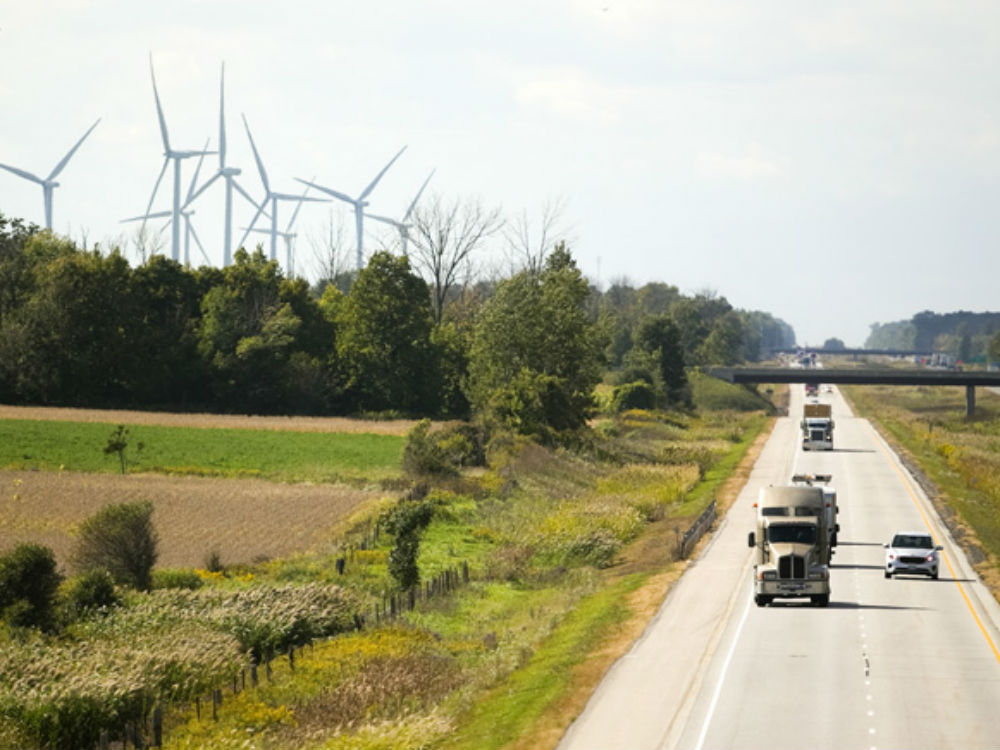
Green Renewable Energy is all about creating a stockpile for the future. While we seem to have depleted most of our sources for energy, Renewable Energy Suppliers seem to have stepped in and saved the day. Nations all over the world are investing in doing their bit to preserve the planet. Just how does all of this work? Here’s a quick overview to help you understand the concept better. To begin with the definition of Green Renewable Energiesr in itself is a very broad definition. It is very difficult to pin point one aspect and say that it completely defines what this type of energy is all about. In a nut shell, green energy is any energy that is produced from a source that can be renewed and does not get depleted every time it is used as a source. Solar power is most popular form of Green Renewable Energy that there is. It is very common in residential areas where solar panels provide electricity not only to heaters but to all electrical appliances in the house as well. Another form of solar energy is wind energy. Wind is created when the sun heats up portions of the earth. The wind created as a result is harnessed by a Renewable Energy Plant and converted into wind energy. Water too is a common source of Green Renewable Energies. The energy that comes from water can be harnessed in two ways, through rain water, glacier water etc or through tides. The energy generated from this source is known as hydroelectricity. Energy through water is generated with the help of turbines. The energy that is derived from the tides and waves is known as tidal or wave power.
Another natural source of energy that surrounds your home all the time is wind. With the use of a DIY Green Energy guide, you can easily and cheaply construct your own wind generator. A homemade windmill is an ideal method of harnessing natural energy. If it’s not such a nice day out, and you think that your solar panels aren’t absorbing much sunlight, you can still generate your own energy from the winds that are blowing about your garden. You can endlessly generate your own energy, regardless of the weather. But what to do with all this free energy? There may be days when it’s calm and overcast, and you fear that you are not creating enough juice and will have to switch back to the grid. Or maybe it’s a gloriously sunny day out, and all that free energy is going to waste. By building your own batteries, you can ensure that not one bit of the energy you create goes to waste.
As an investor, keeping “green” on your stock trading screen may mean something completely different in the future. With all of the nuclear meltdown fear and concern over safety, it’s a good time to talk about clean and sustainable energy sources and how we, as investors, can profit along side the planet in this growing trend. What are the Types of Renewable Clean Energy? Solar Energy: China is currently a world leader in the renewable energy sector, followed by India Germany, Spain, the United States and India. India, one of the sunniest countries in the world boasts over 300 sunny days per year and is quickly becoming a contender in solar energy development. Photovoltaics: Photovoltaics (PV) is a method of generating electrical power by converting solar radiation into direct current electricity by using solar panels containing a photovoltaic material (silicon, telluride, copper indium among others). Wind Power: According to the Global Wind Energy Council (GWEC), wind energy capacity grew 22.5% in 2010 even though coal and natural gas remain cheaper in leading power consuming nations.
Consider the fact that energy must be transmitted from one place to another if it is to be of any use. When speaking of electric-power transmission lines, you are no longer speaking of green technology. The bulk transfer of energy generated by windmills, etc, requires the same type of infrastructure as energy generated in any manner. The cost to build and maintain windmills, transmission infrastructure and roadways that will support the equipment used to build these things is substantial. The cost to humans living near windmills is tremendous in terms of quality of life. The decrease in property value as a result of the sudden appearance of a several-hundred foot of blot on the landscape is significant and the operation of these machines actually requires electricity from the grid they are supposed to be feeding. These are real economic costs; but what about the cost to nature? Besides potential harm to people and animals such as bats (whose lungs can be burst by the pressure changes around windmills), consider that the wind may also have a job to do that doesn’t involve fueling our thirst for comfort and entertainment.
Just like a windmill depends on the specific amount of wind to make an adequate amount of electricity to power your household. Perpetual motion generators produce energy using magnets and their magnetic forces that have several benefits over substitute renewable energy resources including solar and wind. Free energy magnet generators can be assembled very simply at your home and utilized anytime. You will be able to build an electromagnetic motor mechanism using materials which can be with no trouble acquired from any area hardware shop, like Home Depot or Lowe’s. You ought to also get hold of a very detailed D.I.Y. It really is wise to part with some cash and get your hands on the appropriate materials instead of wasting money on poor quality goods. You ought to be able to purchase the materials you will need for around $139.95. Technological improvements have made the invention of perpetual motion motors an astonishing reality. Individuals all across the country are reaping the advantages day after day. The apparatus can be your item of satisfaction and part of your residence adornment. You will be able to happily display your scientific wisdom to visitors and astound them. The electromagnetic motor device has enormous potential, which when gained can stop your energy problems. A free energy motor generator can be utilized as an alternative to typical energies which we have been depending on for so long.
In more technical terms, Energy-10 is perfect for examining both residential and commercial buildings that are distinguished by 1 or 2 thermal zones (usually less than ten thousand square feet). One of the most impressive features of Energy-10 is that it is able to estimate the energy performance of a building with very little information provided by the user. By inputting basic data such as the nearest weather data recorder, the building’s air-conditioning system, ventilation, heating, total floor space, and its geographic location, this program can come up with an accurate initial estimate of how much energy the said building will use. By doing so, Energy-10 ensures the production of home and building designs that are truly efficient in every sense of the word. Energy-10 is a home design software developed by the NREL or National Renewable Energy Laboratory. Their Center for Building and Thermal Systems is the department that is at the forefront of this highly publicized initiative. They teamed up with other entities including the Berkley Solar Group, the Lawrence Berkley National Library, and the SBIC or the Sustainable Buildings Industry Council to come up with this groundbreaking software. The result is a magnificent product that is not only effective in terms of its design capabilities, but also a breath of fresh air in the world of building construction wherein the well-being of nature has seemingly become irrelevant. Energy-10 is currently available through the SBIC and more information is available on their website.
